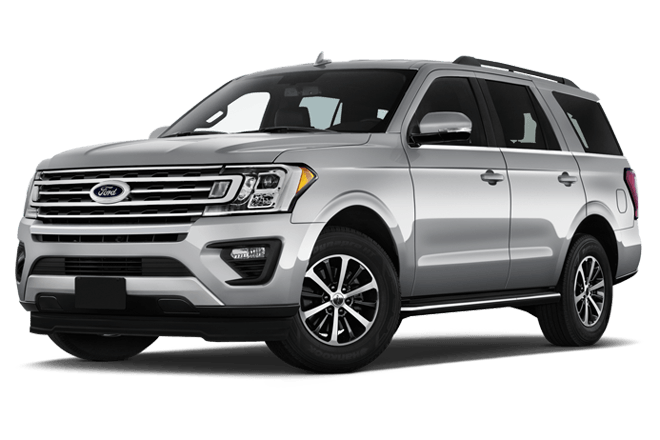Good Advice To Choosing A Car Rental Site
Wiki Article
How Do You Determine The The Rental Insurance Policy When You Rent The Car
Reviewing the coverage of insurance and choices that the rental firm offers is crucial to ensure you have enough protection and avoid unnecessary expenses. Understanding the fundamental coverage first. You need to know what is covered by the rental agreement. The majority of rental companies offer basic liability insurance that covers bodily injury as well as damage to property caused by third party in the event that you're at fault. There are some limitations to this coverage and the deductibles.
Explore Additional Coverage Options. Many rental companies provide additional insurance plans in addition to their standard coverage, to give you additional protection. The most popular types of extra coverage are Collision Damage Waiver and Loss Damage Waiver. They help to reduce or completely eliminate your financial liability when you damage the rental vehicle.
Review the limits of coverage and deductables Check the coverage limitations and deductibles with the various types of insurance. Determine the maximum amount insurance will cover in case damage or loss and how much you will have to pay out of pocket (deductible) before insurance coverage is utilized.
Personal Insurance Policies. Find out if you have coverage on your credit card or insurance policy. Some credit cards will provide second-party coverage for rental cars in the event that you use the card to make payments. In the same way, your auto insurance policy might extend coverage to rental vehicles, however it will depend on the policy you have.
Review Your Risk-Tolerance: When making a decision on whether to buy additional insurance, it is important to be aware of your risk tolerance as well as your financial position. If you're concerned about potential loss or damage to the rental vehicle and you want security, then purchasing additional coverage may be worth the expense. You could cut costs by not taking the insurance offered by the rental company if your own coverage is sufficient.
Find out about the Exclusions and exceptions: Check with the rental company whether there are any limitations or exclusions from the insurance coverage. For example when the vehicle is used commercially or for business purposes, it could be exempt from insurance. Be sure to fully understand the terms and conditions of the policy. This will allow you to avoid any surprises if accidents occur.
Document Damages: Before accepting the rental vehicle, check it carefully for any signs of wear and wear. Document any damage, such as scratches, dents or other damages, and document it on your rental contract. This will help you avoid being held liable for any damage you may have caused before you returned the vehicle.
You can minimize unnecessary costs by carefully reviewing the options for insurance and coverage offered by the rental agent. Take a look at the most popular rent a car for site examples including most rented luxury cars, find rental car, rent my car out, car rental and prices, rent a car luxury car, rent out car, sports car rental, rental luxury, best prices for rental cars, near me rent car and more.

How Do You Inspect The Vehicle For Existing Damages Or Wear And Tear?
It is important to check the vehicle for indications of wear or damage prior to you sign the papers. This is to prevent being held accountable for issues that were already present. Utilize these guidelines to perform an extensive inspection.
Take a walk around the exterior of the vehicle and examine the car for scratches, dents, damages, or dings.
Special attention should be given to bumpers and doors fenders, mirrors and other components that are likely to be damaged.
Make sure to inspect the windows and windshields for cracks, chips or other damages.
Look under the vehicle to determine the presence of any damages or leaks.
Interior Inspection:
All doors should be opened, including the trunk and inspect the inside of the vehicle.
Examine the carpets, seats and upholstery for any stains, tears or excessive wear.
Examine the adjustment of all seats, including the driver's seat to be sure that they function correctly.
Check the steering column, dashboard, and controls to see the presence of any damages or malfunctions.
Examine the state of air conditioning systems, heating systems and ventilation.
Check your audio system and turn signals, lighting and other electronic components.
Functional Inspection
Start the vehicle and then check the dashboard for any error or warning messages.
Test the accelerator and brakes (if necessary) for smooth operation.
To ensure that your headlights, high beams brake light, turn signal all work You can test them by switching on the lights.
Test the windshield washers, the liquid washer, the horn, and emergency/parking brake.
Note any damage that may occur:
To document existing damage To document any damage that has occurred, utilize the rental agreement form, or the smartphone app offered by the rental company.
Make videos or photos of your car from different angles. Pay attention to any places that are showing indications of wear or damage.
In the rental agreement, note the location, size and severity of any dents, scratches or other damage.
Any existing damage should be brought to the attention of the representative of the rental company before accepting the car.
Report Damage:
Inspect the vehicle thoroughly and notify the company representative about any damages you spot.
Please ask that they document any damage to their documents. Also, request a copy the inspection report.
Make sure you and the representative of the company sign the agreement form or the inspection reports to confirm any damage already discovered.
If you adhere to these steps and thoroughly check the rental car before accepting it for any damage, wear and tear or other indicators to ensure your safety and enjoy a more pleasant rental experience.

What Are The Things To Consider When It Comes To The Terms And Conditions For Returning Your Rental Car?
When looking over the terms and conditions to return a rental vehicle be sure to take into consideration a number of factors in order to ensure a smooth and painless return. Here are some of the important things to be aware of The Drop-Off Location You've Been Given: Verify the designated drop-off location in the rental contract. Return the vehicle at the exact location that was set by the company. There are numerous drop-off locations for various rental companies including airport terminals and rental offices. Check that you are at the correct location.
The rental agreement should be reviewed to determine acceptable times for return. Rental companies often specify the date, time and the location of the car. To avoid penalties or late fees, return the car before the specified deadline.
Penalties for Late Returns: Read the rental company's policies on late returns, as well as any penalties that may be associated with it. Knowing the possible consequences of returning the vehicle beyond the agreed upon return time is crucial. This could include additional charges, late fees or other penalties. Some rental companies may charge the full cost of rental for each day or partial day the car has to be returned late.
Extension Options: If you anticipate needing the rental car for a longer time than originally planned, inquire about extension options. Certain rental companies allow customers to extend their rental periods, but only if they are available and they are willing to pay extra fees. Call the rental business prior to your arrival for an extension request, if necessary.
Return Conditions Requirements. Be familiar with the requirements for returning the vehicle rental in an acceptable condition. The majority of rental agreements stipulate that the car must be returned with the same conditions that it was it was rented. Take note of any instructions for removing or clean the car prior to returning it.
When returning the vehicle, examine it carefully. Check for any new issues or damages that might be present during your rental period. Document any damage or issues and report them to the attention of the representative from the rental company.
Return Procedure: Learn the steps to return the car you rented, and the required paperwork or procedures. Follow the instructions of the rental company when you return keys and other paperwork. You will also receive a receipt of your return.
Consider these factors when returning the car and review the conditions of the rental contract to make sure you are meeting the terms of the rental agreement. This will allow you to avoid any penalties or complications.
